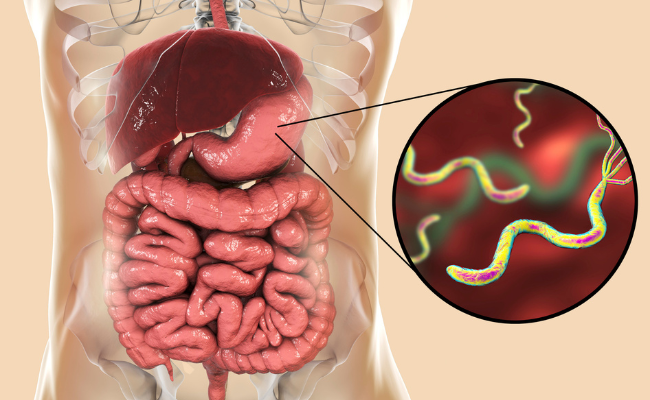How to Treat Hydatid Disease?
- January 12, 2024
- No Comments
What is Hydatid Disease?
Hydatid disease, alternatively known as echinococcosis or cystic echinococcosis, is a parasitic infection induced by the larvae of tapeworms from the Echinococcus genus. Human infections primarily arise from two key species: Echinococcus granulosus and Echinococcus multilocularis. The transmission of this zoonotic disease typically occurs through the ingestion of contaminated food, water, or direct contact with animals carrying the infection. Although relatively uncommon in North America, the severity of Hydatid disease necessitates heightened awareness and understanding of its transmission dynamics.
This condition, identified as hydatidosis or cystic echinococcosis, manifests when individuals inadvertently consume tapeworm eggs, with prevalent hosts being sheep and dogs. Noteworthy is the fact that Hydatid disease, despite its rarity in North America, poses a substantial health threat due to the formation of cysts, predominantly in the liver or other vital organs. Unattended, these hydatid cysts can lead to severe health complications, underscoring the critical importance of timely and suitable treatment approaches to mitigate the potential risks associated with this parasitic infection.
Why is Hydatid Disease a Concern?
Hydatid disease poses a significant public health concern due to its potential to cause cystic lesions in various organs, most commonly in the liver and lungs. The cysts, formed by the larvae, can grow over time and lead to serious complications. Rupture of the cysts can result in the release of parasite material, triggering an immune response that may cause anaphylaxis or secondary infections. If left untreated, hydatid disease can be life-threatening.
How is Hydatid Disease Contracted?
- The life cycle of the Echinococcus tapeworm involves two hosts: a definitive host, usually a carnivorous mammal like a dog or a fox, and an intermediate host, often a herbivorous mammal like a sheep or a human. The adult tapeworm resides in the intestines of the definitive host, producing eggs that are excreted in the host's feces. When an intermediate host ingests contaminated food or water, the eggs hatch into larvae, which then form cysts in the organs.
- Humans typically become intermediate hosts by ingesting parasite eggs through contaminated fruits, vegetables, or water. In some cases, direct contact with infected animals or their feces can also lead to transmission.
Treatment Solutions for Hydatid Disease
Medical Intervention:
Anthelmintic Medications: The primary pharmacological approach involves the use of anthelmintic medications such as albendazole and mebendazole. These drugs work by killing the larvae within the cysts. However, their efficacy may vary, and prolonged treatment courses are often required.
Surgical Intervention:
Cyst Removal: In cases where cysts are large, causing significant organ damage, or have ruptured, surgical intervention may be necessary. Surgeons aim to remove the cysts while minimizing the risk of spilling parasite material, which could lead to further complications.
Percutaneous Treatment:
Percutaneous Aspiration-Injection-Reaspiration (PAIR): This minimally invasive procedure involves draining the cystic fluid using a needle, injecting a scolicidal agent (a substance that kills the larvae), and then aspirating the remaining contents. PAIR is often performed under radiological guidance.
Observation and Monitoring:
Watchful Waiting: In some cases, especially when the cysts are small and asymptomatic, healthcare providers may adopt a watchful waiting approach. Regular monitoring through imaging studies helps assess the cyst's stability and whether intervention is required.
Benefits of Treating Hydatid Disease
Prevention of Complications:
Organ Function Preservation: Timely treatment helps prevent the progression of cysts, preserving the function of affected organs such as the liver and lungs. This is crucial in avoiding severe complications and maintaining overall health.
Reduced Transmission Risk:
Breaking the Life Cycle: Treating infected individuals reduces the likelihood of further transmission of the parasite to other hosts. This is particularly important in regions where hydatid disease is endemic.
Improved Quality of Life:
Symptom Relief: Treatment alleviates symptoms associated with hydatid disease, such as pain, discomfort, and potential complications. Patients experience an improvement in their overall quality of life as a result.
Prevention of Secondary Infections:
Reducing Rupture Risks: Prompt intervention decreases the risk of cyst rupture, which can lead to secondary infections and anaphylaxis. This is crucial in preventing additional health complications.
Minimization of Surgical Risks:
Optimizing Surgical Outcomes: When surgery is required, timely treatment allows for better surgical outcomes by reducing the complexity of the procedure and minimizing the risk of complications.











Comments (0)
No comments yet